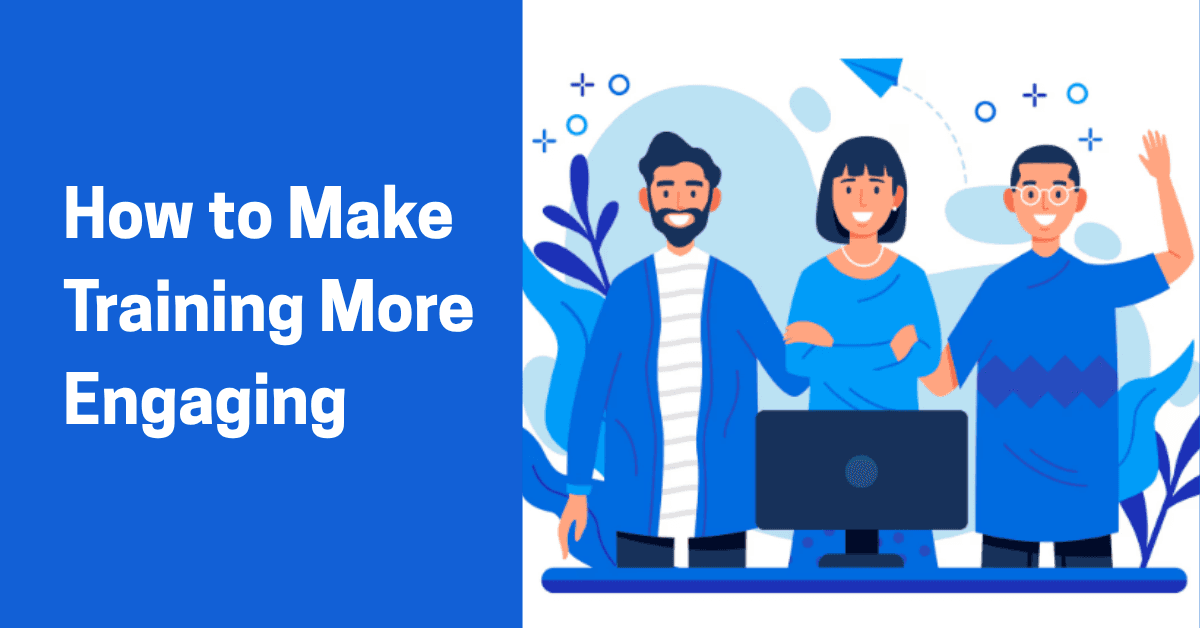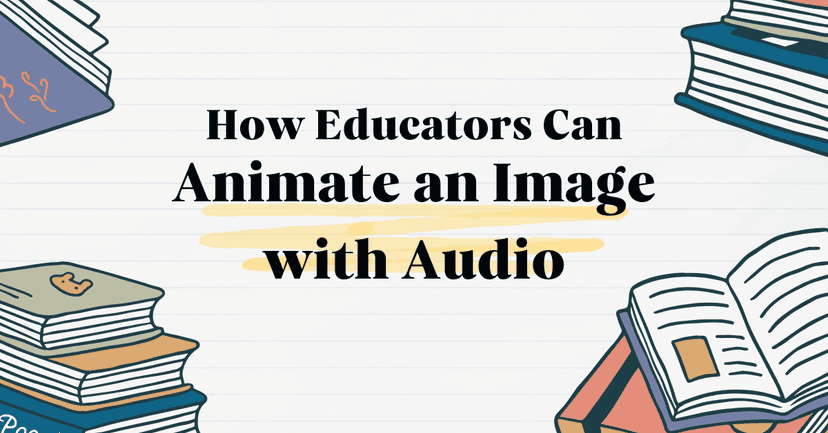
How to Make Training More Engaging & 9 Proven Techniques
We’ll explore what makes training engaging and share 9 proven ways to make it more effective.
Gallup says only 31% of employees “feel engaged” during training and similar activities.
The challenge isn’t just what you teach BUT how to make training more engaging so your content captures attention, encourages participation, and leads to real-world application.
Engagement isn’t a luxury in today’s fast-paced workplace. It’s a necessity. Effective training boosts retention by as much as 43%, improves employee performance by at least 17%, and strengthens company culture. However, it’s worth pointing out that training is meaningless without learner engagement.
In the sections that follow, we’ll explore what makes training engaging and share 9 proven ways to make it more effective.
What Drives Engagement in Employee Training Programs
Image by freepik
Training doesn’t have to feel like a chore. Otherwise, it loses its purpose. Employee learning activities need to spark interest, invite active participation, and connect with people on a practical level for such training to have real impact,
But what drives engagement in employee training programs? More importantly, how can you create content that sticks?
The first key is relevance. Employees are far more likely to engage when the material reflects real-world scenarios and job-specific challenges. Learners need to see the “why” behind “what” they’re being asked to learn.
Next comes interactivity. Passive lectures or long documents are rarely memorable. Instead, modern training programs thrive when they incorporate discussion, feedback, role-play, or digital tools like video explainers and interactive modules.
This is where AI trends in education are starting to shine, like personalized learning paths, adaptive assessments, and even AI-powered avatars delivering content in a human-like way.
Delivery format also matters. Employees have different learning styles, and one-size-fits-all approaches often fall flat. Combining visual, auditory, and hands-on elements can significantly boost retention and engagement.
Today, more organizations are using short-form videos, mobile learning, and gamified content to keep things dynamic and flexible.
Finally, tone and presentation make a difference. Training doesn’t have to be dry. A bit of storytelling, humor, or real-life examples can go a long way in holding attention (something Puppetry.com is known for embracing in creative and educational ways).
Ultimately, learning that feels personal, relevant, and even a little fun is far more likely to succeed. And as more organizations explore how to create corporate training videos, the opportunities to deliver engaging, scalable learning experiences are growing rapidly.
How Training Delivery Styles & Format Impact Engagement
Image by freepik
The way training is delivered can be just as important as the content itself. Even the most insightful material may be overlooked if the delivery method doesn’t match the needs of today’s learners.
Improving learning outcomes requires organizations to focus on learning designs for a changing work environment. These training delivery styles are flexible, interactive, and aligned with how people actually engage with information.
Some learners respond best to visual content, like AI-powered videos or infographics. Others prefer hands-on learning or quick, task-based modules they can complete on their own schedule.
Delivery style matters because it’s the bridge between content and retention and, in many ways, the driver of lasting engagement.
Technology now spearheads adult learning. The rise of the AI-powered trainer means learning can be adaptive, responsive, and highly personalized.
These intelligent systems assess how a user is progressing and adjust the pace or format in real time, creating a dynamic experience far more engaging than static presentations or one-size-fits-all lessons.
Meanwhile, AI-generated lecturers offer consistent, high-quality delivery at scale. With natural speech and human-like presence, they help simplify complex topics and maintain learner attention (especially in hybrid or remote teams where engagement is more challenging).
Combining smart delivery formats with thoughtful instructional strategy empowers you to create training that’s not only informative but genuinely effective.
Whether you're reimagining in-person workshops or scaling digital learning, aligning with modern delivery styles and embracing AI-powered learning technologies is key to keeping your workforce skilled, agile, and engaged.
9 Proven Ways to Make Training More Engaging
Image by freepik
Employee training must do more than just tick a compliance box. It MUST inform, inspire, and spark action. But making training engaging doesn’t mean turning it into entertainment for entertainment’s sake. It means making it meaningful, memorable, and motivating. Here’s how.
1. Start with a purpose.
Training that connects with employees always starts with a clear “why.” Learners are far more likely to buy in when they understand how the training links to their job performance, personal growth, or business goals, they’re far more likely to buy in.
Note that your employees must constantly adapt to new technologies, expectations, and roles.
So, before jumping into content, take a moment to frame the training with its real-world purpose. Is it to reduce risk? How about improve communication? Maybe boost customer satisfaction? Make your goal crystal clear.
After all, a clearly stated purpose keeps learners invested.
2. Tell better stories.
We’re wired for stories. They give meaning to information and help people remember it long after a slide deck is closed.
One of the best practices in creating training videos for employees is to replace dry case studies with real-world examples, personal experiences, or even fictional narratives that reflect common workplace challenges (and using an AI avatar to tell your story).
Stories are especially effective in leadership and compliance training, where ethics, decision-making, and empathy play a role.
They’re also powerful when using AI-generated presenters, as realistic facial expressions and natural delivery can bring characters and scenarios to life.
3. Personalize the experience.
Generic training programs often fail to connect. Personalization is key when improving learner engagement and learning outcomes, whether through role-specific paths, pre-assessments, or adaptive content.
Effective training speaks to employee learners’ roles, goals, and pace.
An AI-powered employee trainer can shine in this role. These smart systems analyze learner behavior. They identify learning gaps, too. More importantly, they tailor content delivery to each individual.
It’s not just a tech gimmick. It’s a game-changer for employee training engagement and retention.
4. Mix up the media.
Some folks prefer visual content. Others thrive with audio, while many need hands-on activities to truly absorb material. Everyone learns differently!
Effective training combines multiple content types, like videos (even AI-generated videos), infographics, animations, podcasts, and practical exercises, to engage diverse learning styles.
Using a mix of learning media also reduces fatigue and enhances learning.
For example, a 20-minute training video is much easier to get through if it includes animation, voiceover, visual callouts, and interactive pauses for reflection.
AI-generated instructors can deliver this kind of content with clarity, consistency, and a human touch, especially for remote or hybrid teams.
5. Make learning interactive.
Image by upklyak on freepik
Engagement thrives on interaction. Here’s a clue! Learning retention drops when employees passively consume training.
But learners click, discuss, drag, drop, decide, and reflect, they engage.
So, try adding quizzes, decision trees, simulations, and role-playing exercises throughout your training. Even simple drag-and-drop tasks or timed challenges can boost interest and participation.
These small touches activate the brain’s reward centers and transform training into something more than a checklist. Your training session becomes a dialogue.
6. Embrace microlearning.
Most adult learners can only focus their attention for 10 to 20 minutes, making long training sessions tough on them.
Effective corporate trainers break complex topics into smaller, more manageable (more “easily understood”) lessons, making it perfect for busy professionals. They’ll have the just-in-time support when it’s needed most.
Such a bite-sized approach also works well with mobile learners. You can update it, too (as processes or policies change). Microlearning is ideal for learners who may need rapid access to upskilling content on the go.
7. Create space for reflection.
Many training programs feel rush (jumping from one module to the next within a limited time frame). Learners often don’t get a chance to pause and think about they’ve learned, including how they’ll apply it in the real world.
Short journaling prompts, team discussions, and review checkpoints help. These reflective moments empower learners to internalize key concepts, enabling them to consider how newly learned “ideas” apply to their daily work.
AI-powered education of the future sees artificial intelligence prompting learners to revisit concepts where they showed uncertainty. It reinforces knowledge through tailored repetition.
8. Invite feedback (and use it!).
Image by pch.vector on freepik
Engaged learners want to feel heard. So, build feedback loops into your training, like quick surveys, open comment boxes, or live discussions. Be transparent about how that input shapes future content.
This two-way communication improves your program. More importantly, it builds a culture of shared ownership.
Learners are more invested in training when they know their voices matter.
9. Leverage the right technology.
Finally, never underestimate the power of the right tech stack. Consider intuitive learning management systems, immersive simulations, and everything in between.
Today’s most innovative training programs use tools like gamification, VR, and AI to engage users in fresh, flexible ways.
For example, an AI-powered trainer can provide instant feedback, guide learning paths, and even detect when a learner is disengaged.
Meanwhile, AI-generated lecturers ensure consistent, scalable delivery. They are perfect for global teams or high-growth environments.
Technology must serve the learner, and the best platforms are intuitive, mobile-friendly, and integrate seamlessly into the daily workflow.
Final Thoughts
Creating engaging training is about intentional design, clear purpose, and respect for how people learn best. When you combine these proven techniques with smart technology and storytelling, you create learning experiences that truly connect.
At Puppetry.com, we believe training should never be boring. With thoughtful delivery, human-centered design, and the right tools (including AI), you can bring your learning programs to life, no matter the format or audience.
Related Articles
Discover more insights and expand your knowledge with these hand-picked articles

How to Create Corporate Training Videos with AI (and Why It’s a Total Game-Changer)
Discover ways that Puppetry AI can revolutionize the creation of corporate training videos. So, if you’re ready to engage your team with interactive, memorable, and cost-effective learning experiences with AI-powered puppets, read this today!

How to Make Learning Interactive with Puppetry AI
Learn how to make learning interactive with Puppetry and invite learners to become partners in creating, exploring, and growing their educational experiences.

How Educators Can Animate an Image with Audio to Engage Students
Animations with sound can be the hook that keeps your learners watching, listening, and absorbing every detail. Here’s why animations are worth adding to your teaching toolkit.
Ready to Create Amazing Content?
Join thousands of creators who use Puppetry to bring their ideas to life. Start creating engaging content today with our AI-powered platform.